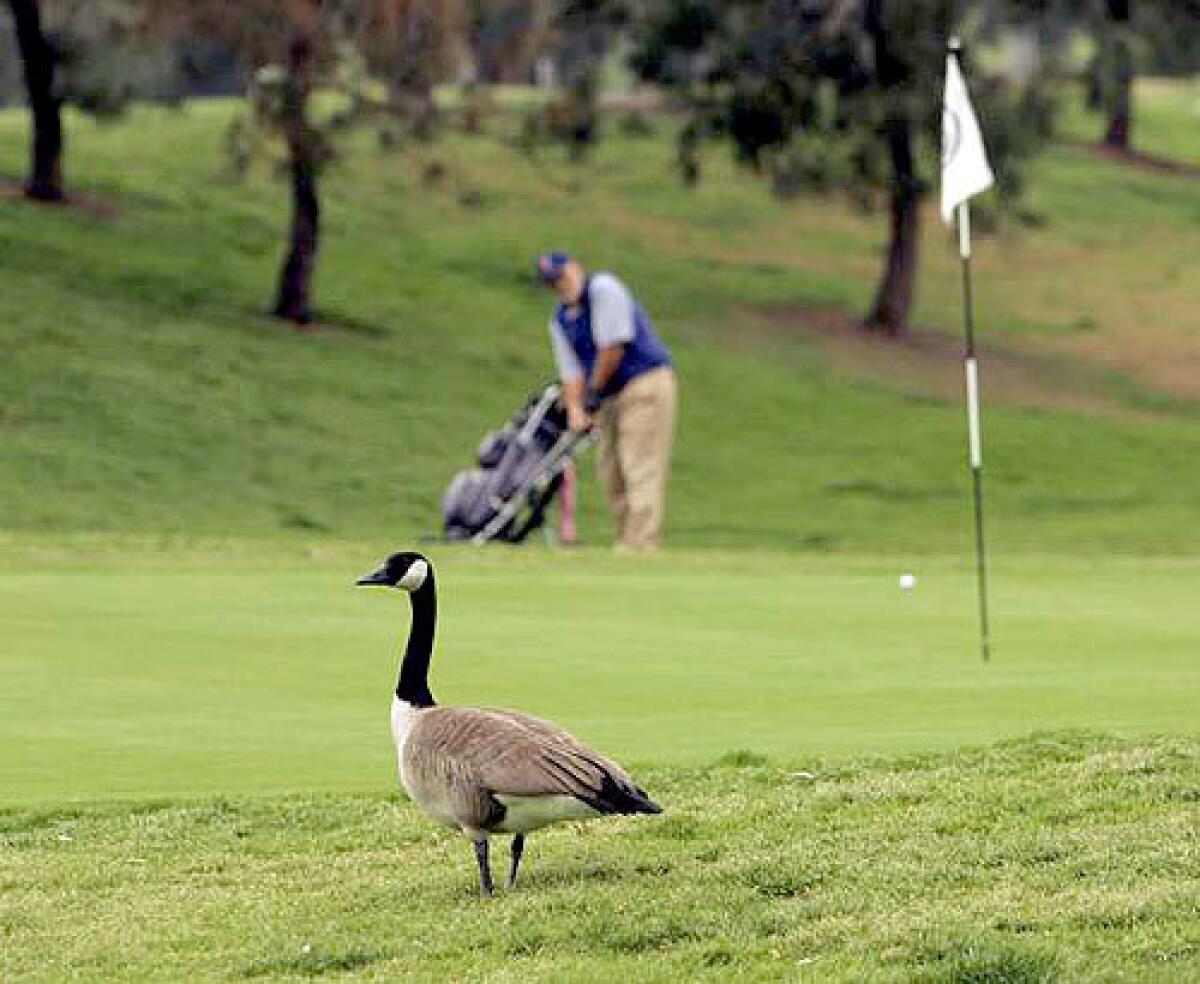Good design spoiled

- Share via
It’s an L.A. tradition to stomp all over tradition.
Sure, there is Gamble House or Bullock’s Wilshire to prove we’re not opposed to preserving vital architecture. But nowhere is this great city’s disregard for the past more evident than in the treatment of Griffith Park’s Harding and Wilson golf courses.
Unbeknown to most, legendary amateur golf architect George Thomas designed the 36-hole complex in 1923. He’s the same man behind Riviera, Bel-Air and Los Angeles country clubs and widely considered one of the game’s master designers alongside the likes of A.W. Tillinghast (Winged Foot, Bethpage) and Alister MacKenzie (Cypress Point, Augusta National).
Beyond designing the two Griffith Park courses, Thomas also paid for the completion of the then “Los Angeles Municipal” when city finances dried up. His gesture was rewarded with a free lifetime pass to play city courses.
While the wealthy former World War I captain would surely be tickled by Griffith Park’s unending popularity and status as an affordable municipal course, little evidence suggests that anyone is aware of Thomas’ philanthropy.
No memorial plaque. Nor any recognition of his contribution in the wonderfully designed Spanish-style clubhouse.
What remains at Griffith Park is a painful reminder for anyone revering his ingenious design touches and the efforts of those who constructed this civic treasure.
Various Parks and Recreation regimes have carved away at Thomas’ design like a cadaver, making it impossible to believe that an architect of world-class designs set foot on this once-grand 36-hole complex.
Despite the meddling and some property-line encroachment, much of his original routing exists, including the trademark birdieable par- five and hard par-four start to the 6,942-yard Wilson Course.
All 36 greens have been tinkered with or rebuilt. Several out-of-place water features were forced onto the once-rustic property, while the excessive planting of soil-acidifying, non-native trees erases any semblance of a long-term landscaping vision.
Much of Thomas’ trademark bunkering has been filled in, with the remaining hazards in sorry shape. A current in-house bunker renovation project, while certainly well-intentioned, is leaving behind elevated white spores erupting unnaturally out of the landscape.
The architectural demise is made worse by mediocre day-to-day conditions that have plagued Griffith Park for as long as anyone can remember.
It does not have to be this way.
While a recent movement to restore classic public courses has seen mixed results for municipal golfers, the renovations at San Diego’s Torrey Pines, San Francisco’s Harding Park and New York’s Bethpage Park were carried out in hopes of luring a major tournament. In the case of Torrey Pines and Bethpage, a U.S. Open was secured, and Harding Park will host the 2009 President’s Cup.
Though it would be great fun to see the Champions or LPGA tour return to Los Angeles at a rejuvenated Griffith Park — ideal infrastructure is in place thanks to ample parking and easy freeway access — a better scenario would be the rejuvenation of George Thomas’ Griffith Park courses for the citizenry of Los Angeles. If a professional tour wants to stop by once a year and pay a few hundred thousand dollars to ensure higher maintenance standards, fine.
Golfers and city officials will inevitably question the need for a Griffith Park restoration when the courses are already so busy.
But good golf architecture is about more than just moving customers around efficiently and economically. The best designs inspire golfers to keep playing this wonderfully wretched game. If designed with grace and humility, sound architecture takes the player through a beautiful setting while introducing intriguing strategic problems that offer the ultimate contest between golfer and nature.
Furthermore, with the nearby Marty Tregnan Academy doing a fine job of introducing kids to the wonders of golf, Los Angeles owes the next generation a golf course that inspires their imaginations and intensifies their desire to become stewards of this town.
Because the financially strapped city would have a hard time justifying an architectural restoration even as the courses produce steady revenue, a wealthy visionary is needed to step up to raise the $3 million needed to properly restore Griffith Park’s greens, bunkers and tees to something resembling its past glory. (Don’t worry, Mayor Villaraigosa, you can still cut the opening-day ribbon.)
Thankfully, our city has always been blessed by idealists who also happened to value the importance of sport: William May Garland in the early 20th century, the late great John Argue in the 1980s and ‘90s, and modern-day dreamers like Casey Wasserman and Richard Riordan.
It is essential that a Griffith Park rejuvenation be driven by private financing and professional advisors working at a fair price to maintain today’s green fees.
Accessibility and affordability must be preserved for all city residents.
George Thomas would not have it any other way.
*
Geoff Shackelford is author of several books on golf course design, including “The Captain: The Life and Work of George C. Thomas Jr.” He can be reached through his website, geoffshackelford.com.
More to Read
Go beyond the scoreboard
Get the latest on L.A.'s teams in the daily Sports Report newsletter.
You may occasionally receive promotional content from the Los Angeles Times.










